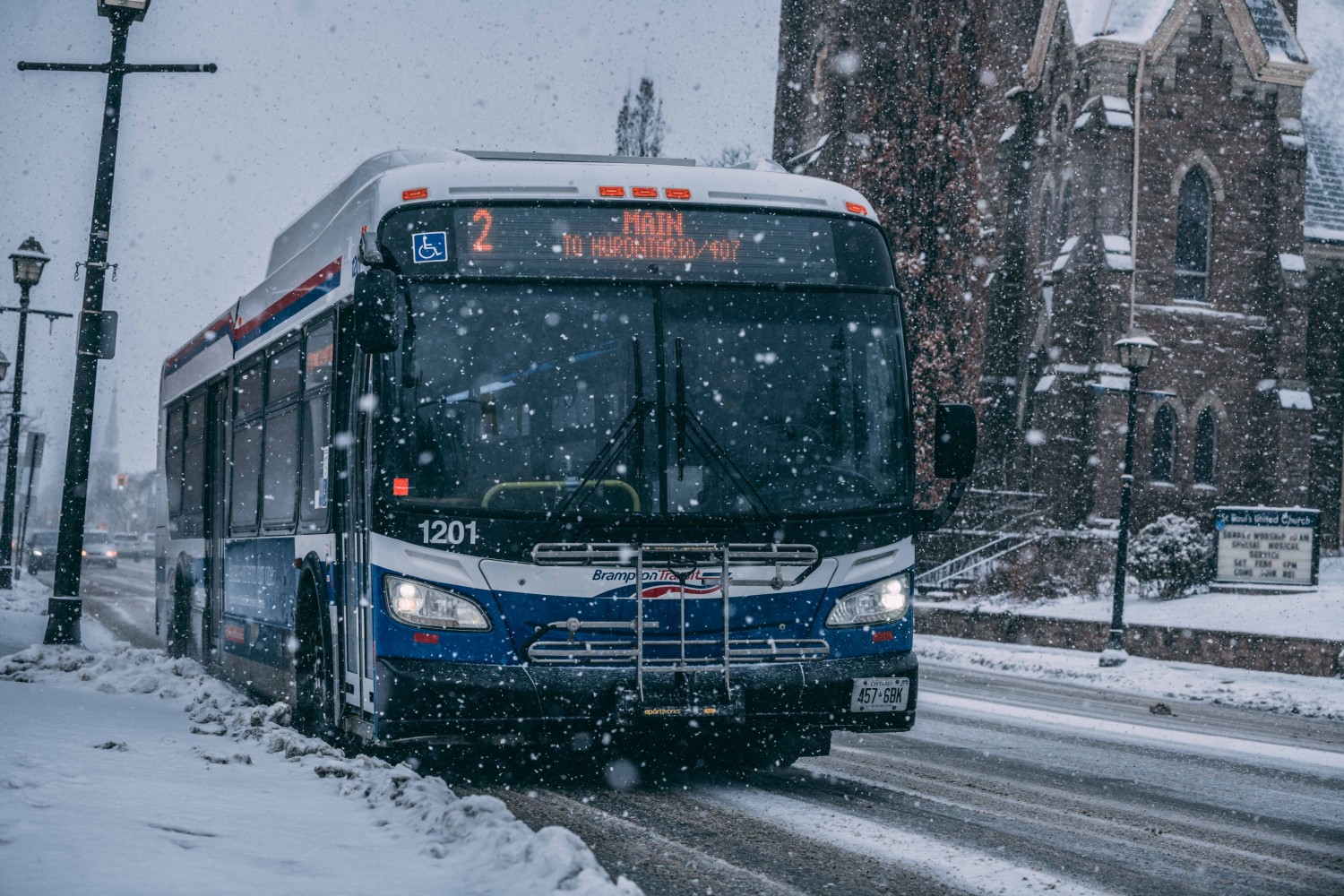
Is Brampton’s rapid transit growth coming to an end?
A year ago, Brampton Transit (BT) was grappling with a system that was stretched thin as ridership numbers continued to surge. Complaints were flooding in about overcrowding and late arrivals. BT was at a tipping point, and the 2019 budget planned for a cash influx over three years to help push BT over the hill. But it may have slipped in the wrong direction instead.
The 2020 budget has postponed a number of planned positions and projects for Brampton Transit, including a $135 million maintenance and storage facility, and 81 roles for 2020 — the large majority of which were for new drivers to help move around the growing number of residents relying on transit. It’s a surprising decision, but one the city says is based on projections that fell short.
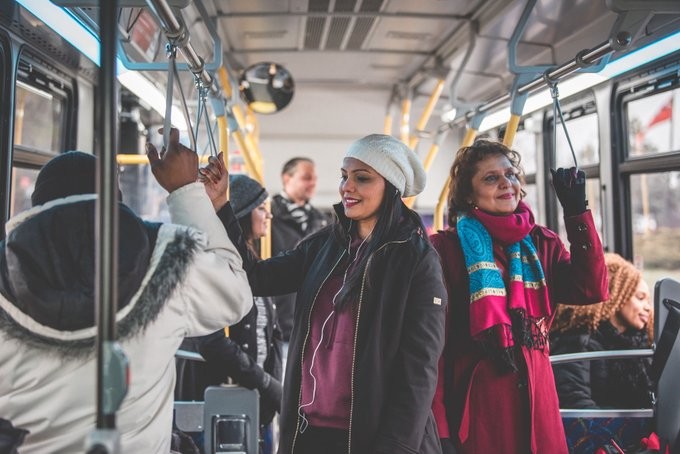
“Slower ridership growth was experienced in 2019 than was budgeted,” stated the city in an emailed response. “Anticipated growth in 2020 over the 2019 actual ridership results will be accommodated within current service levels.”
Despite the 14 percent budget bump, the city won't add any new transit hours in 2020, the first time service levels have been frozen in more than a decade. According to city staff, the extra money will cover initiatives once supported by the province and replace a reduction in gas tax funding. The city states, to deal with any growth in 2020, there are plans to re-allocate services on up to 15 percent of routes in order to meet the demand. “As a regular part of operations, the city will continue to monitor and respond to changes in demand for services, while balancing tax pressures on our residents,” the city stated.
This had several councillors concerned during Monday’s budget deliberations, including Regional Councillor Pat Fortini who questioned the elimination of 81 new positions, saying he is already observing overcrowding on routes during peak periods. Overcrowding on transit was also listed as an area for improvement by respondents to a Forum Research survey commissioned by the City of Brampton ahead of budget deliberations.
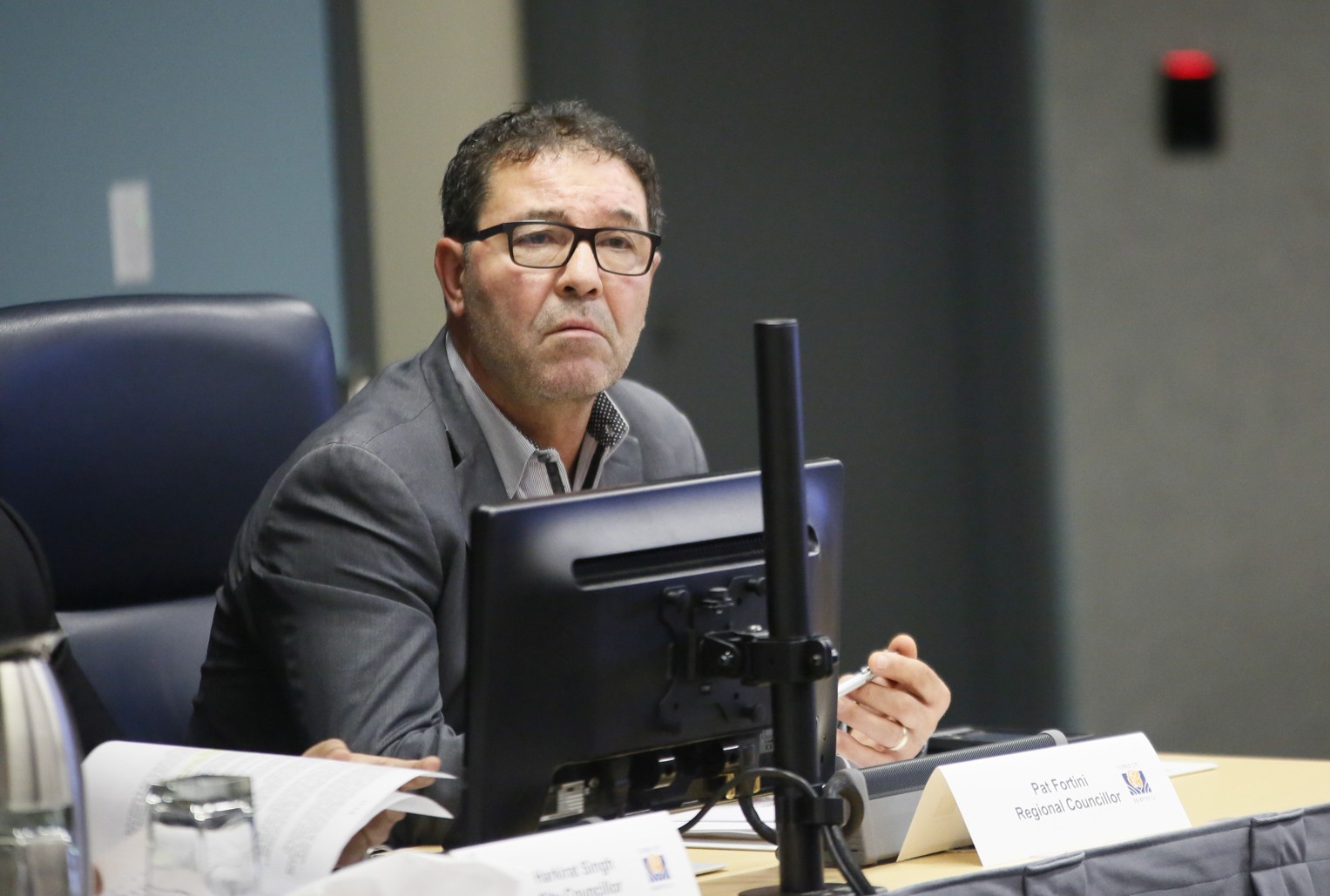
Regional Councillor Pat Fortini
“Solely as a transit person, we’d like all sorts of service hours, but reasonably when we put the corporate lens on all the pressures of the city, we feel that we can meet a lot of our demands by repurposing some routes,” said Brampton Transit General Manager Alex Milojevic, who added the 14 percent increase is “just to keep the lights on.”
The potential change to transit services also drew the attention of Regional Councillor Michael Palleschi, who requested that councillors be made aware of any route changes or cancellations within their wards.
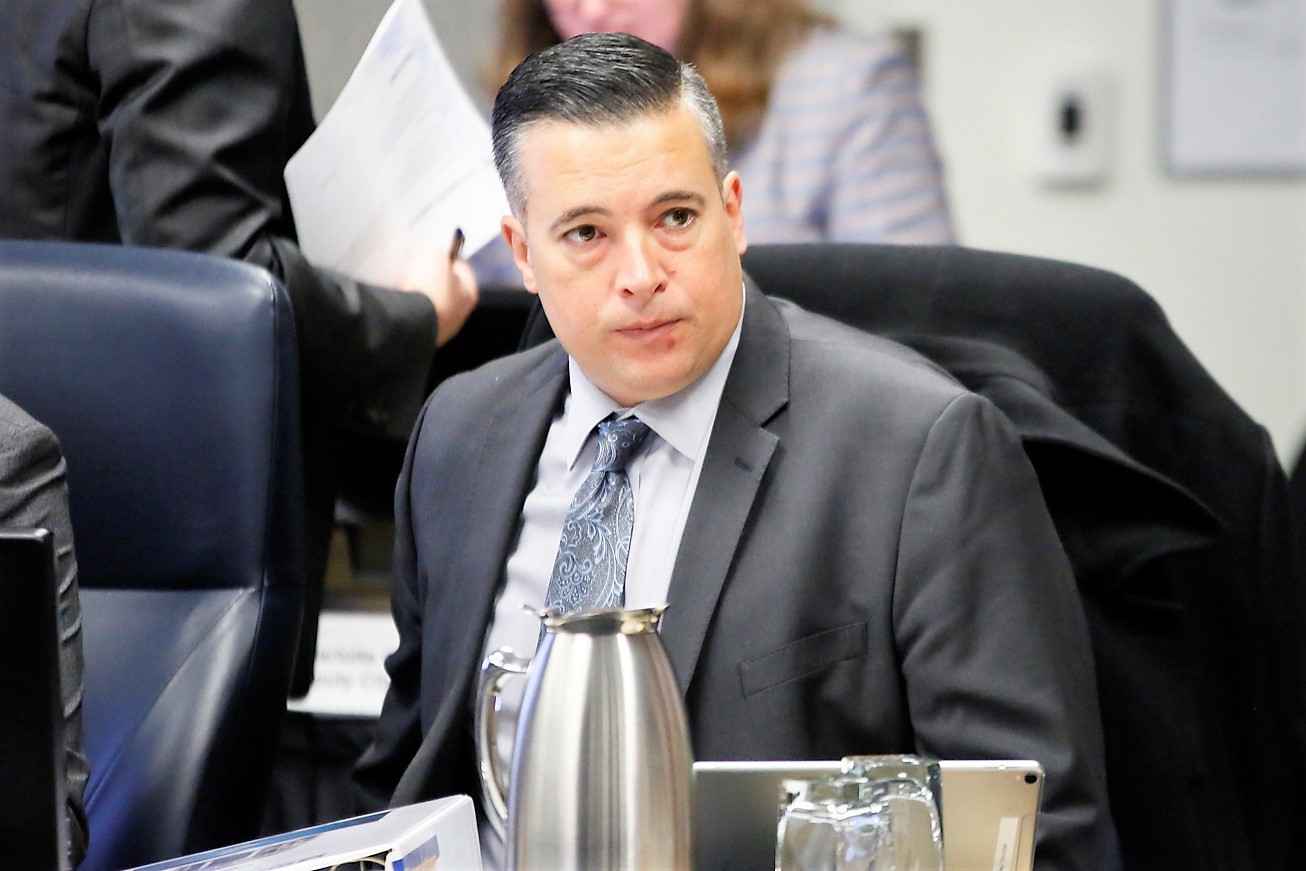
Regional Councillor Michael Palleschi
While Brampton Transit has been serving residents for more than four decades, things have only really changed within the last 20 years.
The transit system expanded from 28 routes in 2001, of which only 11 offered Sunday service, to 50 routes in 2018 with 32 of them running seven days a week. Including Züm rapid transit, the GO shuttle, express and school routes, BT operates 70 routes in total and catered to 31 million riders in 2018. The expansion has been a sprint to keep up with rapidly increasing demand. In 2019, it was estimated that 40 percent of BT and Züm routes experienced overcrowding.
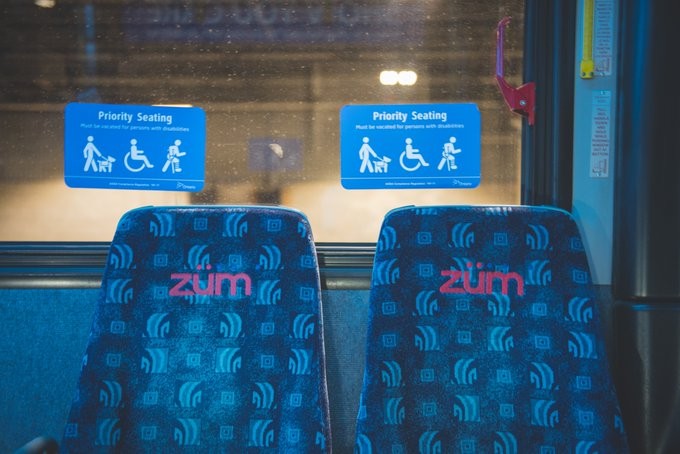
Following an 18 percent growth in ridership in 2017, followed by 14 percent in 2018, council poured funds into the transit system in the 2019 budget, adding 12 Züm buses to the fleet, along with 65 transit operators.
However, the end of the year was bittersweet for Brampton Transit. While the system ended the year with record transit usage of 31.9 million riders, and saw its busiest month on record with more than 3 million trips taken in September 2019, the growth was minimal. The influx of riders Brampton was planning for didn’t come, resulting in only 2 percent ridership growth, the transit system’s worst year since 2015.
For context, in the Greater Seattle area, the county’s transit system, Sound Transit, was celebrated in early 2019 for absorbing the highest transit ridership increase in the United States, with 2.5 percent more riders choosing transit in 2018 than the year before.
So a ridership increase of 2 percent isn’t bad. In fact, it’s actually above the norm for transit systems in Ontario and Canada. However, it raises a problem for Brampton’s budget. Many of the projections made for future years were based on this continuing growth, as well as funding from other levels of government, and when all of those things dry up, the city is left in a financial bind.
“The 2019 budget projected increases for Transit’s budget in 2020 of $3.2 million including 81 new positions. This was based on a continuation of significant ridership revenue growth, doubling of the provincial gas tax and projected assessment growth increases of over 2 percent,” the city stated. “This significant investment is required to address the province cancelling the doubling of the provincial gas tax, slower ridership growth in 2019 than forecast, and facing the economic reality of a decline in assessment growth.”
In essence, the ground is shifting beneath the feet of Brampton Transit, and now city staff and councillors are left with some tough decisions, while public transit users are left to wonder what comes next.
“I shake my head sometimes only because they like to talk about ridership and how it’s increasing, which it is and it's a good thing, but it's a bit frustrating they’re not trying to, as far as the administration goes, not trying to increase the service hours,” says Mark Sebamaalai, a Brampton resident, who commutes to his job in Mississauga via public transit. “Ideally, I wish they’d look at public transit users a bit more seriously because it’s a good bulk of people.”
As the city explained, projected growth in 2020 will be maintained within the existing level of service, but at the same time, users will pay slightly more to hop on the bus.
Modest fare increases will be seen across the board starting in April, with cash fares increasing 10 cents, adult and youth Presto fares increasing 5 cents, as well as small increases to weekly and monthly passes. The city will also be swallowing about $750,000 in lost revenue to allow seniors to ride for free.
And while Brampton may no longer see incredible growth in transit use, the city remains one of the fastest growing in the country. Now would be a good time for BT to prepare for growth and change that is certain to come.
In part, council is preparing for that inevitability with its dedicated transit levy. The additional 1 percent tax on residents’ bills is expected to garner $9.6 million in 2020 growing to approximately $20 million in 2022. However, it will only be a fraction of the investment needed during that same period. The 81 staff initially planned for 2020 came with an $8.5 million price tag.
There are also many unknowns when it comes to future costs for transit. Currently, Brampton Transit is piloting an electric bus project that will see eight e-buses on the streets by the end of 2020 or early 2021 with assistance from the federal government. It’s uncertain what the final impact could be if Brampton decides to push forward with more e-buses once the pilot ends, but what is certain is as climate change continues to influence decision-making, the costs of fuel will only continue to rise.
Aside from keeping fingers crossed and depending on other levels of government to reach out with a funding lifeline, the city also doesn’t have much of a safety net when it comes to its transit projects.
Currently, Brampton’s Transit Development Charge Reserve, a primary source for capital project funding, is in deficit and was pushed even further into the red in 2019 when the city took more than $10 million out of the exhausted reserve, pushing it to $48.2 million owing.
The rocky financing and unreliability of funding from other levels of government has led to the delay in the city’s desperately needed transit maintenance and storage facility. A project that originally was set to see $135 million in funding this year, but has now been delayed until 2021 where it’s now expected to put nearly $175 million worth of pressure on the city’s finances.
Mayor Patrick Brown says the city is currently in the midst of trying to work out a deal with the federal government on the project, which is expected to come with a price tag as high as $250 million.

Brampton Mayor Patrick Brown
“There’s been a little bit of tinkering because we’re looking at electric buses and how that might change it, but we expect we’re going to have a partnership with the federal government for that,” he said.
If Brampton is able to incorporate electric buses and infrastructure in the new facility, this could be a game-changer for Brampton Transit, Milojevic says.
“There’s huge opportunities,” he says. “That would change the landscape of Brampton in meetings it emergency climate change (declaration).”
Putting reasons for the delay aside, there’s no denying the facility is desperately needed, and the longer the project gets pushed out, the more it will handcuff Brampton Transit’s growth.
Brampton currently has two depots, Sandalwood and Clark, capable of housing up to 510 vehicles. In order to avoid needless maintenance costs, idle buses need to be stored indoors when the temperature dips below zero, so storage capacity directly affects the number of buses the city can operate.
A 2015 report suggested that rising transit usage would mean both depots reach capacity by 2021, when Brampton Transit’s ridership is expected to require at least 509 buses. The document, the city’s Transit Master Plan, called for a third maintenance and storage facility to be built in the northeast part of the city for 2021 and a fourth in the southwest by 2028.
As Milojevic previously told The Pointer, federal and provincial funding was being sought in time for 2024.
Despite the three-year delay in developing a new facility and the strain this will cause current facilities and fleet, Milojevic expressed optimism about the ability to manage the growth.
“We feel fairly comfortable with our growth, comfortable that we can most likely accommodate [new buses] in our current two facilities — which would be overcapacity,” Milojevic said. “There are [additional] areas in our facilities where we can actually store buses, as well as areas where we can potentially put in a portable hoist to accommodate extra buses overcapacity for a certain period of time.”
The transit facility is not the only project delayed due to a lack of funding from other levels of government, the city says.
In fact, $32 million in projects was deferred from 2019 as a result of not receiving expected federal funding, the main source of which is the joint federal/provincial Investing in Canada Infrastructure Program (ICIP). These projects include $100,000 for an emerging technologies study, $10 million for fare collection equipment and $5 million for smart buses. Brampton could again be facing similar delays in 2020 if the money doesn’t flow.
“Transit’s 2020-2022 capital program is also highly contingent on receiving ICIP funding and cannot proceed as planned without the federal and province governments fulfilling their commitments,” the city states. “For example, Transit’s 2020 capital budget requires ICIP funding of $57M, the 2021 capital budget requires $42M and the 2022 capital budget requires $46M. In addition, the Transit Maintenance and Storage Facility requires $128M in ICIP funding to proceed."
The delays in the ICIP have been well-documented, with both the feds and the province pointing the finger at one another as the party responsible for the delays. A 2019 report from the federal Parliamentary Budget Officer suggested that certain provincial governments (not led by Liberals) had been shortchanging cities by almost $5.4 billion since the launch of the ICIP.
“Clearly, it affected us substantially,” Milojevic said. “It severely impacted us in terms of how we get to that infrastructure development and build to meet the demand…We’re hoping that the province will be more responsive and reactive to getting projects approved.”
With this uncertainty, the city would be smart to try and find alternative sources to fund needed transit projects, or redirect money away from unnecessary efforts.
For Sebamaalai, this could come from the number of road widening projects the city has planned. In 2021, the city will spend $58 million on the widening of Williams Parkway alone (that project was originally slated for this year).
“I think take that money and put it into buses because that's a return on investment that sees itself daily,” he says. “How often do those roads really get congested? It’s most just during rush hour times…six hours a day. After that you just see empty roads.”
The city certainly does have a gridlock problem. Based on 2015 numbers, nearly 20 percent of vehicle trips taken in Brampton were on congested roads. Continued reliance on personal vehicles raises questions about how effective Brampton Transit is in creating a viable alternative. In 2015, the last year for which data is available, only 24 percent of Brampton residents were using sustainable modes of transportation.
As the city works to revamp its Transportation Master Plan, now would be the time to chart the course for a future that is more public transit-oriented and aligned with the 2040 Vision.
"The Transportation Master Plan is intended to provide guidance on long-term strategies that will help to manage congestion and to facilitate travel needs by all modes as the city continues to grow, with a focus on prioritizing travel by foot, bicycle, public transit, and ridesharing, consistent with the City’s 2040 Vision,” the city stated.
The review of the current master plan is being initiated this year, with an updated version expected to be presented to council in early 2022.
Email: [email protected]
Twitter: @JoeljWittnebel
Email: [email protected]
Twitter: @nida_zafar
Tel: 416-890-7643
Submit a correction about this story


